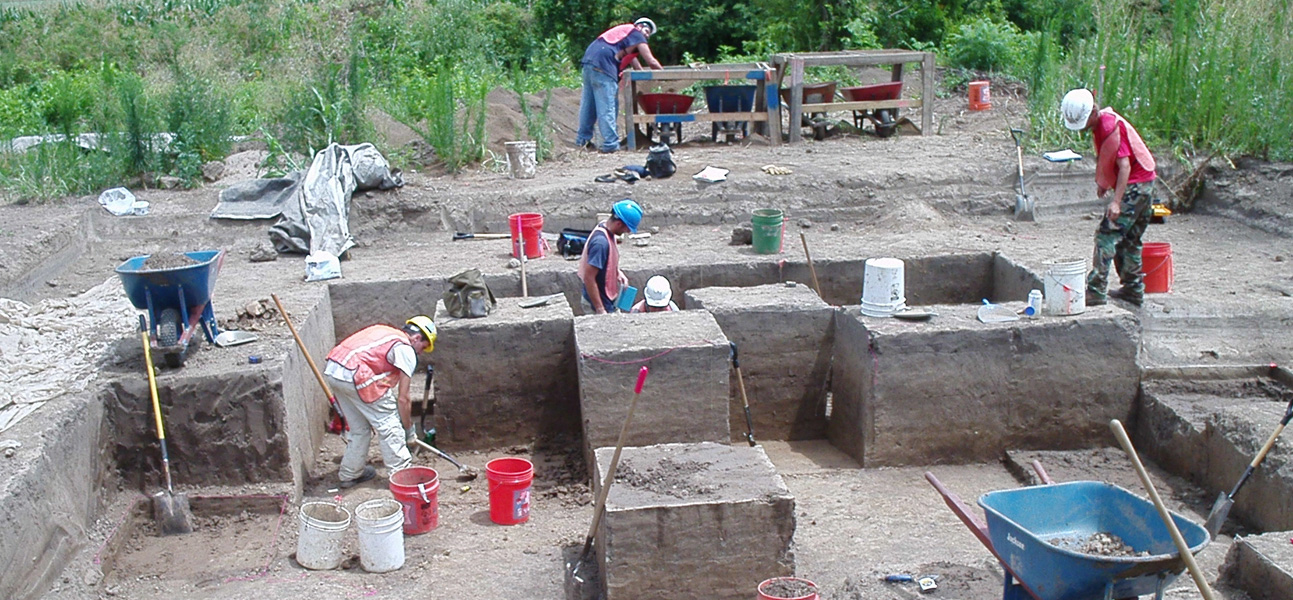
30 Apr Excavations at the Berhorst Site
During the course of the AOS project, CRA had the opportunity to investigate a number of interesting sites. Here, I’ll discuss one aspect of our analysis of the Berhorst site. A summary of the Berhorst excavations can be found on the MoDOT web site at: http://www.modot.org/ehp/AOS_Volume5.htm. Buried components were identified at the site during the hand-excavation of two blocks. The component of interest here is the Middle Archaic component (circa 5000 BC based on a series of radiocarbon dates).
The vast majority of the artifacts associated with the Middle Archaic component were lithic artifacts, which are defined as flakes from making stone tools and various stone tools. This component did not produce a large number of artifacts. In fact, less than 600 lithic artifacts were recovered from this component. The only other artifacts recovered were a few pieces of burnt hickory and acorn shell. Given the rather low density of materials recovered, and the very good context of these materials (buried within low energy alluvial/colluvial sediments), more detailed analyses of the materials were possible than is often the case for larger, more complex sites.
Micro-wear analysis was conducted on the lithic artifacts to determine how the stone tools were used at the site. A variety of quantitative methods were employed to examine the spatial association of the artifacts recovered. These results were further assessed via the refitting of artifacts: basically, conjoining two artifacts that were at one time one artifact (for example, a flake produced while making a tool is refit to the tool). The combination of these methods allows us to reconstruct what the site would have looked like when it was occupied 7,000 years ago.
The schematic map below depicts the site set up as we believe it would have appeared while occupied (Figure C). The data suggest that the site was occupied by a small group of people, possibly a nuclear or extended family. The site would have been occupied for less than a month. A main habitation area is indicated by the general distribution of materials within our excavation block. There are two hearths present in this area, each with a different set of tools associated. In the upper right of the map is a hearth with artifacts that suggest the maintenance of tools. The other hearth has general debris that one might expect in association with cooking (kitchen area). Towards the center of the map is a flint knapping area. A higher density of flakes from stone tool manufacture along with tools broken during manufacture was recovered in this area. It is likely that a flint knapper seated in this location produced many of the stone tools employed at the site during the occupation.
Several of the flakes recovered from other areas of the block refit with artifacts associated with the knapping area. In fact, several of the flakes that were originally produced in the knapping area retained evidence that they were used as simple tools. These tools were recovered from the tool maintenance and kitchen areas, further indicating the association of materials within the block. On the lower left portion of the map is an area that was almost devoid of artifacts. The lack of artifacts in this area may suggest the location of a temporary structure or sleeping area. The detailed analyses of the artifacts and their associations allowed us to see a short period of time in the life of people who lived in Missouri some 7,000 years ago.



